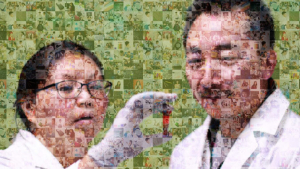
Taylor “Uʻi” Barongan, a biology student at the University of Hawaiʻi at Hilo, contributed to a published commentary article that tackles the issues of stereotypes and status of Asian Americans in science, technology, engineering and math, commonly called the STEM fields.
The article, titled “Asian Americans in STEM are not a monolith,” is published in the July 2023 issue of Cell, a publication featuring review and opinion articles on recent research advances and issues of interest.
Barongan addresses concerns about the status of Asian American scientists within the world of STEM and seeks to break stereotypes that the authors argue have been confining students and scientists of Asian descent for too long.
“We’re seen as a model minority,” she said, “I’m sure you’ve heard the intensely problematic statement ‘all Asians are good at math,’ and that’s a prime example of how Asians are seen as this monolith for success, especially in the STEM world.”
The commentary

The published commentary article concerns the status of Asian American scientists within the world of STEM and seeks to break stereotypes that have been confining students and scientists of Asian descent for too long. It covers topics such as the model minority myth, the panethnicity of Asian Americans and implicit biases in science and education.
As an Asian American woman in STEM, these issues are close to Barongan’s heart.
According to Barongan, stereotypes about Asian Americans in STEM have real-world implications and have led to disparities in receiving grants. She said the pan-ethnicization of Asian Americans who are a massive and diverse aggregate group of people often means that diversities among them are not recognized. This lack of recognition has also resulted in a lack of public data about Asian Americans in STEM and in society.
“People like me, people who are Filipino, are in that category but we are not represented at all,” Barongan said. “There are so many different Asian cultures that it’s just so problematic to have them in one category, and so this article talks a lot about that, and how different groups are affected by that label.”
A UH Mānoa study showed how often Filipino students don’t get the resources they need.
“Culturally there’s some barriers that might prevent them from getting education in the same way someone from a non-Asian background would get,” she said.
With such a scarcity of available data on this topic, Barongan’s commentary contributes a lot to the knowledge of Asian Americans in STEM and the struggles they face.
Barongan co-authored the article with other students at Vanderbilt University. Barongan was an undergraduate researcher in Vanderbilt’s Hinton Lab, department of molecular physiology and biophysics in June 2022. The work was part of the Promoting Academic Excellence with Community Engagement and Reach Multicultural Scholars program funded by the American Heart Association. Only 10 undergraduate students nationwide from groups underrepresented in science and medicine are selected to participate each summer.
“My research at Vanderbilt consisted of studying aging in mitochondria, and also writing diversity, equity and inclusion manuscripts,” said Barongan. “I’ve been working with my mentor, Dr. Antentor Hinton, on and off as a scientific artist, and continuing some of my manuscript writing and research since then.”
For more visit UH Hilo Stories.

